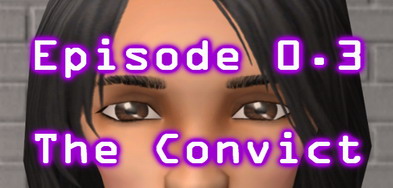Grand Text Auto reports a call for proposals for essays to be included in a reader on machinima. Most often, machinima is the repurposing of video gameplay that is recorded and then re-edited, with additional sound and voice over.
People have been creating machinima with 3D video games, such as Quake, since the late 1990s. Even before that, in the late 80s, my friends and I would record our Nintendo victories on VHS, more in the spirit of DIY skate videos. However, in the last few years, the machinima community has seen tremendous growth, which coincided with the penetration of video editing equipment in the home. What started as ironic short movies have started to grow into fairly elaborate projects.
Until the last few years, social research on games in general was limited and sporadic. In the 1970s and 1980s, the University of Pennsylvania was the rare institution that supported a community of scholars to investigate games and play. A vast proliferation of book and social research exists on gaming and especially video games, which we have discussed here.
Although I love machinima, I am surprised as to how quickly a reader is being produced. Machinima is still a rather fringe phenomena, albeit growing. My first reaction is that machinima is not exactly ready for an entire reader on the subject. I look forward to being surprised by the final selection of essays.
Part of this reaction comes from the notion that machinima is a rather limited form. In my mind, machinima is the repurposing of video game output. However, machinima.org emphasizes capturing live action/ real time digital animation as an essential part of the form, thereby removing the necessity of the video game. Most machinima is created within the virtual video gaming environment because that is where people are able to most readily control and capture 3D animation in real time. Live action or real time capture is different from traditional 3D animation tools (for instance Maya) where you program (and hence control) the motion of your object, background, and camera before you render (or record) the animation rather than during as in machinima.
Broadening of the definition of machinima, as with any form, plays a role on the sustainability of the form. For example, in looking at painting versus sculpture, painting seems to confine what is considered “painting” to pigment on a 2D surface. Where more expansive interpretations of the form get new labeling such as mixed media or multimedia. On the other hand, sculpture has expanded beyond traditional materials of wood, metal, and stone. Thus, the art of James Turrell, who works with landscape, light and interior space can be called sculpture. I do not imply that painting is by any means dead. The 2004 Whitney Biennal had a surprisingly rich display of painting and drawing, as well as photography. However, note the distinction that photography is not considered painting, although photography is 2D medium.
The word machinima comes from combining machine cineama or machine animation. This foundation does pose limits to how far beyond repurposing video game output machinima can go. It is not convincing to try to include the repurposing of traditional film and animation under the label of machinima. Clearly, repurposing material such as japanese movies or cartoons as in Woody Allen’s “What’s Up, Tigerlily?” and the Cartoon Network’s “Sealab 2021” is not machinima. Further more, I am hesitant to call the repurposing of a digital animation machinima. I am not familiar with any examples, but I would not be surprised if they exist.
With the release of The Movies, people can use the game’s 3D modeling engine to create wholly new movies. It is not readily clear to me, if The Movies allows for real time control of it’s characters. If it does, then “French Democracy” (the movie made by French teenagers about the Parisian riots in late 2005) should be considered machinima. However, if it does not, then I cannot differentiate the “French Democracy” from films made in Maya or Pixar in-house applications. Clearly, Pixar’s “Toy Story” is not machinima.
As digital forms emerge, the boundaries of our mental constructions guide our understanding and discourse surrounding these forms. I’m realizing that how we define these constructions control not only the relevance but also the sustainability of these forms. Machinima defined solely as repurposed video game output is limiting, and utlimately less interesting than the potential of capturing real time 3D modeling engines as a form of expression, whatever we end up calling it.
if:book
A Project of the Institute for the Future of the Book
